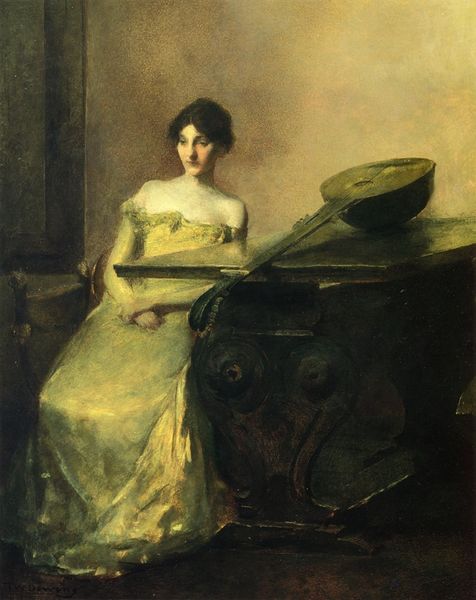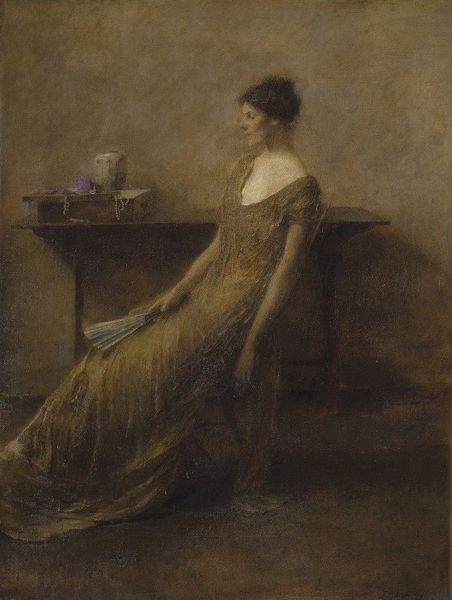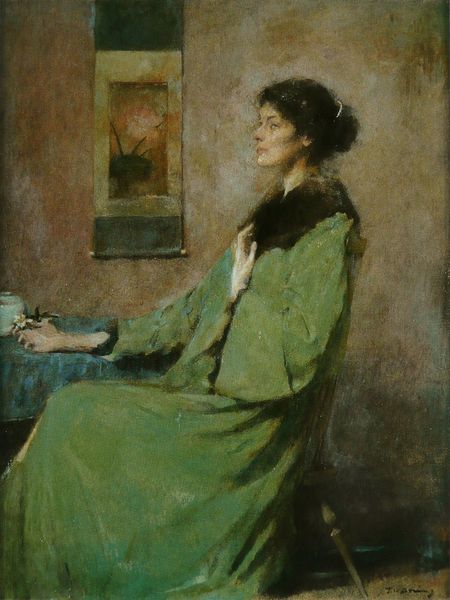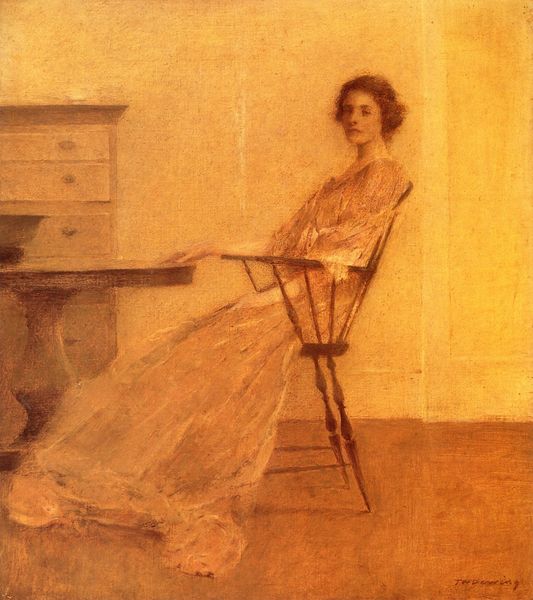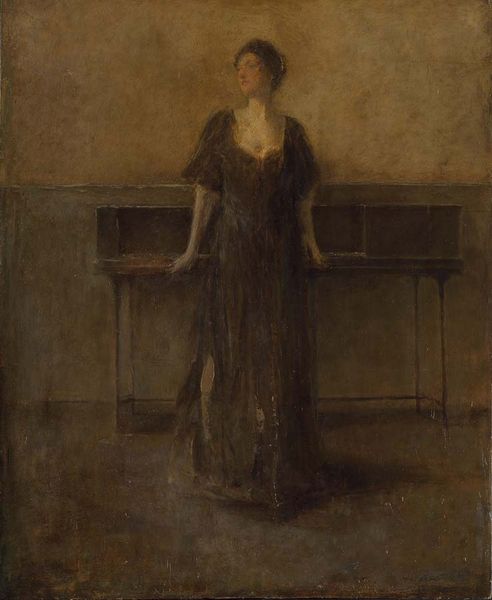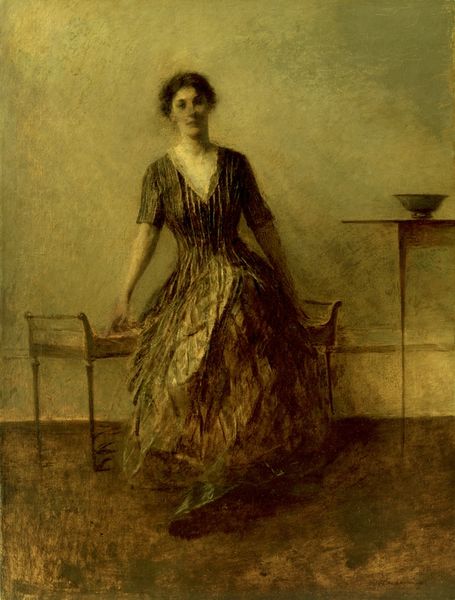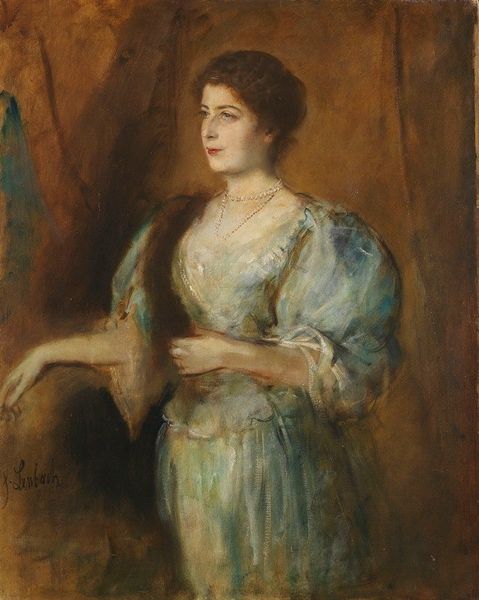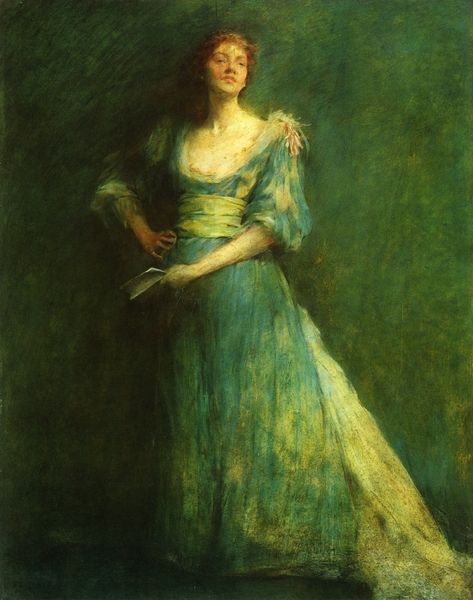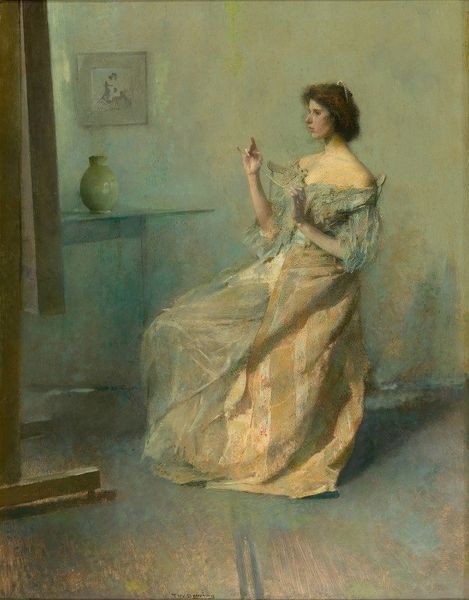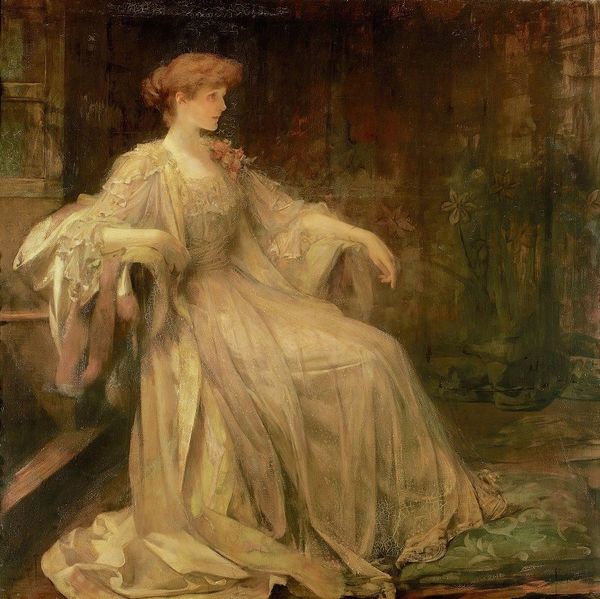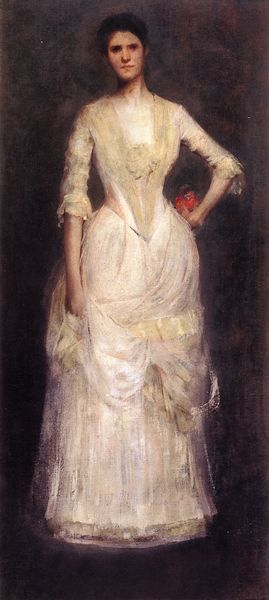
Copyright: Public domain
Curator: Welcome. Before us is Thomas Wilmer Dewing's "Pandora," painted circa 1910. Dewing, known for his ethereal depictions of women, presents a figure steeped in enigmatic allure. Editor: My immediate reaction is one of quietude. The muted tones and the soft edges create a sense of stillness. Her pose seems almost weightless, like she's a figure in a dream. Curator: That feeling isn’t accidental. Dewing's work often circulated within elite social circles that appreciated refined beauty. Consider the context: As American society rapidly industrialized, artists like Dewing offered a counter-narrative. They harked back to more traditional roles for women, privileging introspection and artistic sensitivity, traits highly esteemed in those genteel circles. Editor: Intuitively, the composition strikes me first. The limited color palette—mainly earth tones—really unifies the figure and her surroundings. It almost dissolves any sense of sharp delineation. Curator: And the title adds a layer of complexity, doesn’t it? "Pandora" alludes to the Greek myth where she unleashed evils upon the world by opening a forbidden box. By using the title, Dewing adds layers. But did he agree with the patriarchal overtones of the story? Was he suggesting these refined women would inevitably cause societal disruption, even through their beauty alone? Editor: It's fascinating how he softens that potential reading, if it's even there. Technically, see how he builds up the layers of paint in thin glazes, a kind of sfumato, in areas around the face and shoulders? That veiling effect renders her beauty both present and inaccessible. I see restraint, perhaps, not temptation. Curator: Absolutely, Dewing was closely associated with the Aesthetic Movement that favored beauty and contemplation over narrative depth, further obscuring explicit meaning in the work. What appears to be the vessel sitting behind her could potentially indicate what the content is in the “box." Editor: Right. The composition—the gaze, her placid hands—works with the title. I find myself wondering what she thinks, but Dewing prevents that line of inquiry with a very carefully designed image. The vagueness of that background pulls you into the details, almost forcing you to notice that it lacks that resolution you seek. Curator: Thinking about it, placing this artwork in its historical context enhances the painting, doesn't it? When looking closer we can now recognize some intentional aspects of Dewing's composition. Editor: Yes, without examining his application of impressionistic and classical concepts this piece would have been just another painting in a crowd.
Comments
No comments
Be the first to comment and join the conversation on the ultimate creative platform.
